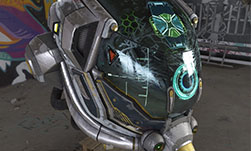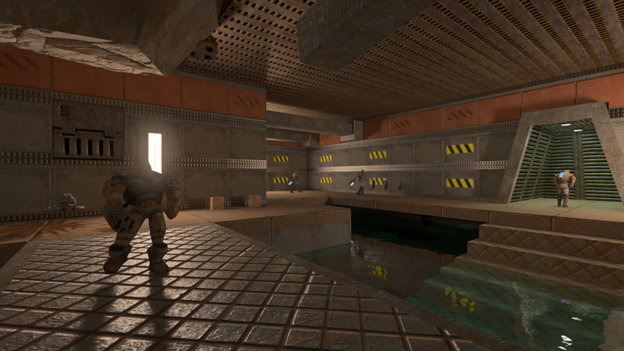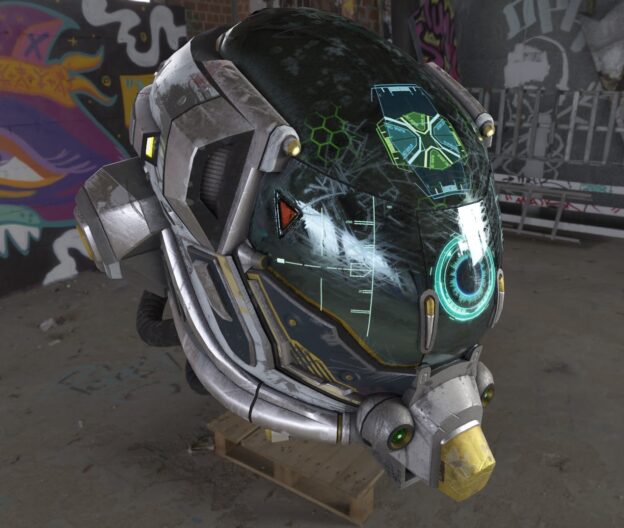We are happy to announce that the version 0.2.0 of torch just
landed on CRAN.
This release includes many bug fixes and some nice new features
that we will present in this blog post. You can see the full
changelog in the NEWS.md
file.
The features that we will discuss in detail are:
- Initial support for JIT tracing
- Multi-worker dataloaders
- Print methods for nn_modules
Multi-worker dataloaders
dataloaders now respond to the num_workers argument and will run
the pre-processing in parallel workers.
For example, say we have the following dummy dataset that does a
long computation:
library(torch) dat <- dataset( "mydataset", initialize = function(time, len = 10) { self$time <- time self$len <- len }, .getitem = function(i) { Sys.sleep(self$time) torch_randn(1) }, .length = function() { self$len } ) ds <- dat(1) system.time(ds[1])
user system elapsed 0.029 0.005 1.027
We will now create two dataloaders, one that executes
sequentially and another executing in parallel.
seq_dl <- dataloader(ds, batch_size = 5) par_dl <- dataloader(ds, batch_size = 5, num_workers = 2)
We can now compare the time it takes to process two batches
sequentially to the time it takes in parallel:
seq_it <- dataloader_make_iter(seq_dl) par_it <- dataloader_make_iter(par_dl) two_batches <- function(it) { dataloader_next(it) dataloader_next(it) "ok" } system.time(two_batches(seq_it)) system.time(two_batches(par_it))
user system elapsed 0.098 0.032 10.086 user system elapsed 0.065 0.008 5.134
Note that it is batches that are obtained in parallel, not
individual observations. Like that, we will be able to support
datasets with variable batch sizes in the future.
Using multiple workers is not necessarily
faster than serial execution because there’s a considerable
overhead when passing tensors from a worker to the main session as
well as when initializing the workers.
This feature is enabled by the powerful callr package and works in all
operating systems supported by torch. callr let’s us create
persistent R sessions, and thus, we only pay once the overhead of
transferring potentially large dataset objects to workers.
In the process of implementing this feature we have made
dataloaders behave like coro iterators. This means that
you can now use coro’s syntax for looping
through the dataloaders:
coro::loop(for(batch in par_dl) { print(batch$shape) })
[1] 5 1 [1] 5 1
This is the first torch release including the multi-worker
dataloaders feature, and you might run into edge cases when using
it. Do let us know if you find any problems.
Initial JIT support
Programs that make use of the torch package are inevitably R
programs and thus, they always need an R installation in order to
execute.
As of version 0.2.0, torch allows users to JIT trace torch R
functions into TorchScript. JIT (Just in time) tracing will invoke
an R function with example inputs, record all operations that
occured when the function was run and return a script_function
object containing the TorchScript representation.
The nice thing about this is that TorchScript programs are
easily serializable, optimizable, and they can be loaded by another
program written in PyTorch or LibTorch without requiring any R
dependency.
Suppose you have the following R function that takes a tensor,
and does a matrix multiplication with a fixed weight matrix and
then adds a bias term:
w <- torch_randn(10, 1) b <- torch_randn(1) fn <- function(x) { a <- torch_mm(x, w) a + b }
This function can be JIT-traced into TorchScript with jit_trace
by passing the function and example inputs:
x <- torch_ones(2, 10) tr_fn <- jit_trace(fn, x) tr_fn(x)
torch_tensor -0.6880 -0.6880 [ CPUFloatType{2,1} ]
Now all torch operations that happened when computing the result
of this function were traced and transformed into a graph:
tr_fn$graph
graph(%0 : Float(2:10, 10:1, requires_grad=0, device=cpu)): %1 : Float(10:1, 1:1, requires_grad=0, device=cpu) = prim::Constant[value=-0.3532 0.6490 -0.9255 0.9452 -1.2844 0.3011 0.4590 -0.2026 -1.2983 1.5800 [ CPUFloatType{10,1} ]]() %2 : Float(2:1, 1:1, requires_grad=0, device=cpu) = aten::mm(%0, %1) %3 : Float(1:1, requires_grad=0, device=cpu) = prim::Constant[value={-0.558343}]() %4 : int = prim::Constant[value=1]() %5 : Float(2:1, 1:1, requires_grad=0, device=cpu) = aten::add(%2, %3, %4) return (%5)
The traced function can be serialized with jit_save:
jit_save(tr_fn, "linear.pt")
It can be reloaded in R with jit_load, but it can also be
reloaded in Python with torch.jit.load:
import torch fn = torch.jit.load("linear.pt") fn(torch.ones(2, 10))
tensor([[-0.6880], [-0.6880]])
How cool is that?!
This is just the initial support for JIT in R. We will continue
developing this. Specifically, in the next version of torch we plan
to support tracing nn_modules directly. Currently, you need to
detach all parameters before tracing them; see an example
here. This will allow you also to take benefit of TorchScript
to make your models run faster!
Also note that tracing has some limitations, especially when
your code has loops or control flow statements that depend on
tensor data. See ?jit_trace to learn more.
New print method for nn_modules
In this release we have also improved the nn_module printing
methods in order to make it easier to understand what’s
inside.
For example, if you create an instance of an nn_linear module
you will see:
nn_linear(10, 1)
An `nn_module` containing 11 parameters. ── Parameters ────────────────────────────────────────────────────────────────── ● weight: Float [1:1, 1:10] ● bias: Float [1:1]
You immediately see the total number of parameters in the module
as well as their names and shapes.
This also works for custom modules (possibly including
sub-modules). For example:
my_module <- nn_module( initialize = function() { self$linear <- nn_linear(10, 1) self$param <- nn_parameter(torch_randn(5,1)) self$buff <- nn_buffer(torch_randn(5)) } ) my_module()
An `nn_module` containing 16 parameters. ── Modules ───────────────────────────────────────────────────────────────────── ● linear: <nn_linear> #11 parameters ── Parameters ────────────────────────────────────────────────────────────────── ● param: Float [1:5, 1:1] ── Buffers ───────────────────────────────────────────────────────────────────── ● buff: Float [1:5]
We hope this makes it easier to understand nn_module objects. We
have also improved autocomplete support for nn_modules and we will
now show all sub-modules, parameters and buffers while you
type.
torchaudio
torchaudio
is an extension for torch developed by Athos Damiani (@athospd), providing audio
loading, transformations, common architectures for signal
processing, pre-trained weights and access to commonly used
datasets. An almost literal translation from PyTorch’s Torchaudio
library to R.
torchaudio is not yet on CRAN, but you can already try the
development version available here.
You can also visit the pkgdown website for examples
and reference documentation.
Other features and bug fixes
Thanks to community contributions we have found and fixed many
bugs in torch. We have also added new features including:
You can see the full list of changes in the NEWS.md
file.
Thanks very much for reading this blog post, and feel free to
reach out on GitHub for help or discussions!
The photo used in this post preview is by
Oleg Illarionov on
Unsplash
 libcu++, the NVIDIA C++ Standard Library, provides a C++ Standard Library for your entire system which can be used in and between CPU and GPU codes.
libcu++, the NVIDIA C++ Standard Library, provides a C++ Standard Library for your entire system which can be used in and between CPU and GPU codes. 

 The 2020.3 release of NVIDIA Nsight Compute included in CUDA Toolkit 11.2 introduces several new features that simplify the process of CUDA kernel profiling and optimization.
The 2020.3 release of NVIDIA Nsight Compute included in CUDA Toolkit 11.2 introduces several new features that simplify the process of CUDA kernel profiling and optimization.

 CUDA 11.2 includes improved user experience and application performance through a combination of driver/toolkit compatibility enhancements, new memory suballocator feature, and compiler upgrades.
CUDA 11.2 includes improved user experience and application performance through a combination of driver/toolkit compatibility enhancements, new memory suballocator feature, and compiler upgrades.
 This month we spotlight Rommie Amaro, professor and endowed chair in the Department of Chemistry and Biochemistry at the University of California, San Diego.
This month we spotlight Rommie Amaro, professor and endowed chair in the Department of Chemistry and Biochemistry at the University of California, San Diego.

 Continuing its industry-leading leading support for Vulkan Ray Tracing, NVIDIA is today rolling out production Vulkan drivers bringing Vulkan Ray Tracing support to GeForce and Quadro for both Windows (version 460.89) and Linux (version 460.27.04).
Continuing its industry-leading leading support for Vulkan Ray Tracing, NVIDIA is today rolling out production Vulkan drivers bringing Vulkan Ray Tracing support to GeForce and Quadro for both Windows (version 460.89) and Linux (version 460.27.04). 

